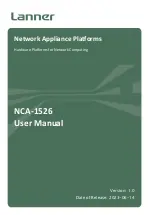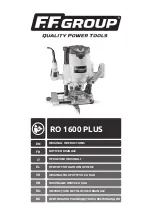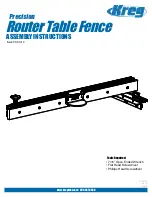
d)
Remove any adjusting key or wrench
before turning the power tool on.
A wrench
or a key left attached to a rotating part of the
power tool may result in personal injury.
e)
Do not overreach. Keep proper
footing and balance at all times.
This
enables better control of the power tool in
unexpected situations.
f)
Dress properly. Do not wear loose clothing
or jewellery. Keep your hair, clothing and
gloves away from moving parts.
Loose
clothes, jewellery or long hair can be caught
in moving parts.
g)
If devices are provided for the connection
of dust extraction and collection facilities,
ensure these are connected and properly
used.
Use of dust collection can reduce
dust-related hazards.
4) POWER TOOL USE AND CARE
a)
Do not force the power tool. Use the
correct power tool for your application.
The correct power tool will do the job
better and safer at the rate for which it
was designed.
b)
Do not use the power tool if the switch
does not turn it on and off.
Any power
tool that cannot be controlled with the switch
is dangerous and must be repaired.
c)
Disconnect the plug from the power
source and/or the battery pack from
the power tool before making any
adjustments, changing accessories, or
storing power tools.
Such preventive safety
measures reduce the risk of starting the
power tool accidentally.
d)
Store idle power tools out of the reach
of children and do not allow persons
unfamiliar with the power tool or these
instructions to operate the power tool.
Power tools are dangerous in the hands of
untrained users.
e)
Maintain power tools. Check for
misalignment or binding of moving parts,
breakage of parts and any other condition
that may affect the power tool’s operation.
If damaged, have the power tool repaired
before use.
Many accidents are caused by
poorly maintained power tools.
f)
Keep cutting tools sharp and clean.
Properly maintained cutting tools with sharp
cutting edges are less likely to bind and are
easier to control.
g)
Use the power tool, accessories and
tool bits etc., in accordance with these
instructions taking into account the
working conditions and the work to
be performed.
Use of the power tool for
operations different from those intended
could result in a hazardous situation.
5) SERVICE
a)
Have your power tool serviced by a
qualified repair person using only identical
replacement parts.
This will ensure that the
safety of the power tool is maintained.
Additional Specifi c Safety Rules for
Cutters
• Always use cutters with a shank diameter
corresponding to the size of the collet installed
in your tool.
• Always use cutters suitable for a speed of
30.000 min
-1
and marked accordingly.
WARNING:
Never use cutters with
a diameter exceeding the maximum
diameter indicated in the technical data.
Residual Risks
In spite of the application of the relevant safety
regulations and the implementation of safety devices,
certain residual risks cannot be avoided. These are:
–
Impairment of hearing
– Risk of personal injury due flying particles.
– Risk of burns due to accessories becoming hot
during operation.
– Risk of personal injury due to prolonged use.
Markings on Tool
The following pictograms are shown on the tool:
Read instruction manual before use.
DATE CODE POSITION (FIG. A)
The Date Code (21), which also includes
the year of
manufacture, is printed into the housing.
Example:
2010 XX XX
Year of Manufacture
Package Contents
The package contains:
1 Router
1 Parallel fence with guide rods
1 Collet 8 mm (GB: 1/4")
1 Wrench # 13/17
ENGLISH
23
Summary of Contents for DW614
Page 1: ...DW614 DW615 www eu ...
Page 3: ...A x x x x x x x x 2 3 4 5 7 6 8 9 10 11 1 21 12 7 8 20 8 13 B C 1 ...
Page 4: ...2 3 4 5 6 7 14 16 4 17 15 11 10 D E 2 ...
Page 5: ...11 18 19 F G H 3 ...
Page 119: ...117 ...
















































